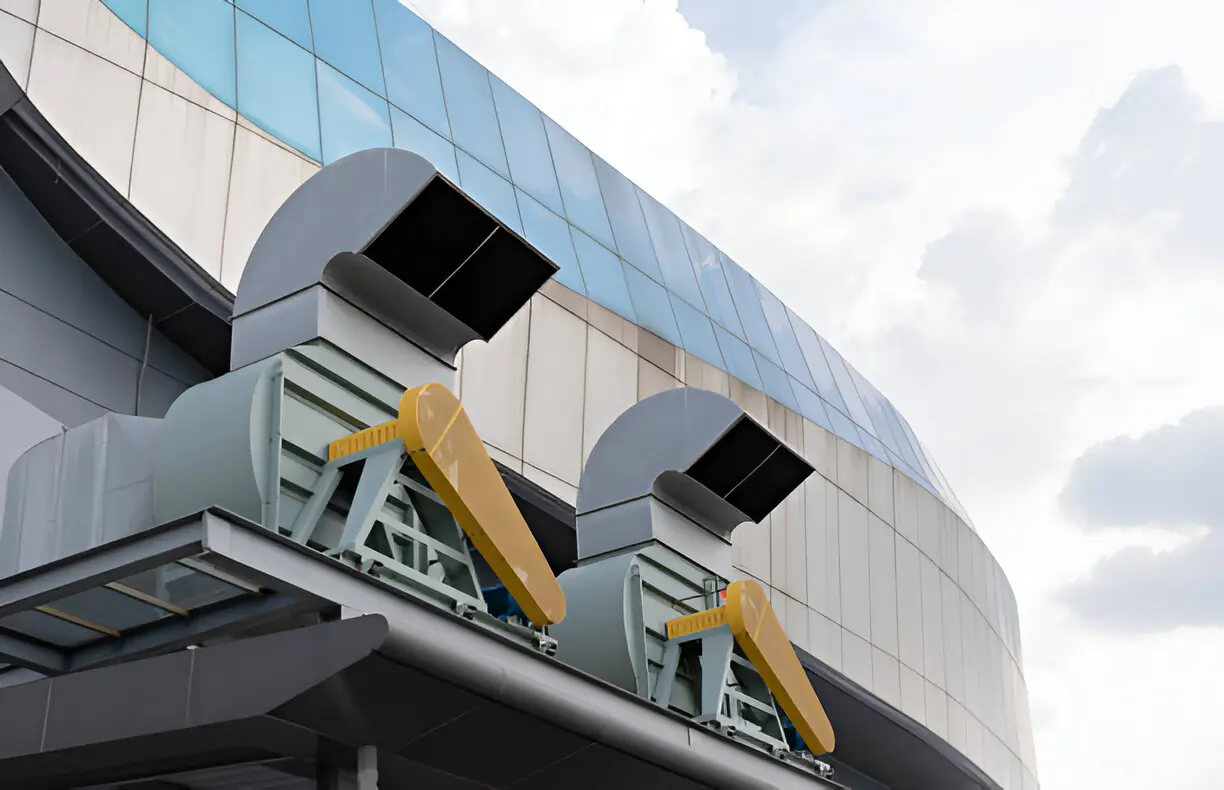Streamlined Ventilation Solutions for Large Buildings
Large commercial buildings face unique challenges when it comes to maintaining optimal air quality and temperature control. From sprawling office complexes to expansive manufacturing facilities, these structures require sophisticated ventilation systems that can efficiently circulate air throughout vast spaces while minimizing energy costs and maintenance requirements.
Modern ventilation technology has evolved significantly, offering building managers and facility directors innovative solutions that go far beyond traditional HVAC systems. These advanced approaches not only improve indoor air quality but also contribute to substantial energy savings and enhanced occupant comfort.
Understanding the Unique Demands of Large-Scale Ventilation
Large buildings present distinct ventilation challenges that smaller structures simply don’t encounter. The sheer volume of space requires powerful systems capable of moving enormous quantities of air while maintaining consistent temperatures and air quality across multiple floors and zones.
Heat distribution becomes particularly complex in expansive facilities. Different areas may have varying occupancy levels, equipment heat loads, and external exposure, creating microclimates within the same building. Traditional ventilation approaches often struggle to address these inconsistencies effectively.
Energy efficiency represents another critical consideration. Large buildings typically account for significant portions of an organization’s utility expenses, making efficient ventilation systems essential for controlling operational costs. Poorly designed systems can waste tremendous amounts of energy through inadequate air distribution or excessive heating and cooling cycles.
Smart Zoning Systems Transform Air Distribution
Zone-based ventilation systems have revolutionized how large buildings manage air circulation. Rather than treating the entire structure as a single unit, these systems divide buildings into distinct zones, each with customized airflow and temperature controls.
Variable air volume (VAV) systems represent one of the most effective zoning approaches available. These systems automatically adjust airflow to different building sections based on real-time occupancy and temperature readings. When certain areas require less heating or cooling, the system reduces air volume to those zones while maintaining optimal conditions in high-demand areas.
Smart sensors play a crucial role in modern zoning systems. Advanced occupancy detectors, temperature monitors, and air quality sensors provide continuous feedback that enables automatic adjustments throughout the day. This responsive approach ensures comfortable conditions while eliminating energy waste in unoccupied spaces.
Energy Recovery Ventilation Maximizes Efficiency
Energy recovery ventilation (ERV) systems have become essential components of streamlined ventilation solutions. These systems capture energy from outgoing air and transfer it to incoming fresh air, dramatically reducing the energy required for heating and cooling.
Heat recovery ventilators can recover up to 80% of the energy from exhaust air, making them particularly valuable in climates with extreme temperatures. During winter months, warm indoor air preheats incoming cold air, while summer operations reverse this process to precool hot outdoor air.
Beyond temperature control, advanced ERV systems also manage humidity levels. This dual functionality proves especially valuable in regions with high humidity, where traditional systems would need to work harder to maintain comfortable indoor conditions.
Advanced Controls Enable Precision Management
Building automation systems (BAS) have transformed ventilation management from reactive maintenance to proactive optimization. These sophisticated control platforms integrate all ventilation components into a unified system that can be monitored and adjusted remotely.
Predictive maintenance capabilities represent a significant advantage of modern control systems. By continuously monitoring equipment performance, these systems can identify potential issues before they cause system failures. This proactive approach reduces emergency repair costs and prevents uncomfortable conditions for building occupants.
Data analytics features provide facility managers with detailed insights into ventilation system performance. Historical data reveals patterns in energy usage, equipment efficiency, and maintenance needs, enabling informed decisions about system optimization and upgrade planning.
Professional Installation Ensures Optimal Performance
The complexity of large building ventilation systems makes professional duct work installation absolutely critical for achieving optimal performance. Proper installation requires extensive knowledge of airflow dynamics, building codes, and system integration techniques.
Experienced installation teams understand how to balance airflow throughout complex ductwork networks, ensuring consistent air distribution to all building areas. They also know how to properly seal ductwork connections to prevent energy losses and maintain system efficiency.
Quality installation includes comprehensive system testing and commissioning procedures. These processes verify that all components function correctly and that the system meets design specifications before final acceptance.
Maintenance Strategies for Long-Term Success
Streamlined ventilation systems require ongoing maintenance to maintain peak performance. Regular filter replacements, ductwork cleaning, and equipment inspections prevent minor issues from developing into major problems.
Preventive maintenance schedules should align with system usage patterns and environmental conditions. Buildings in dusty environments may require more frequent filter changes, while facilities with heavy occupancy might need more regular ductwork cleaning.
Professional maintenance teams can identify efficiency improvements during routine service visits. These opportunities might include adjusting control settings, upgrading components, or modifying operational procedures to enhance system performance.
Creating Healthier, More Efficient Buildings
Streamlined ventilation solutions represent a significant investment in building performance and occupant comfort. Modern systems that incorporate smart zoning, energy recovery, and advanced controls deliver substantial benefits through reduced energy costs, improved air quality, and enhanced reliability.
Facility managers considering ventilation upgrades should evaluate their specific building requirements and explore how advanced solutions can address current challenges while providing long-term value. Partnering with experienced ventilation professionals ensures optimal system design and installation that will serve the building effectively for years to come.
Read more: Exploring the Versatility of Metal Fabrication Across Industries – Answer The Folks
5 Ways to Unlock Funds Without Leaving Your Home – Answer The Folks

